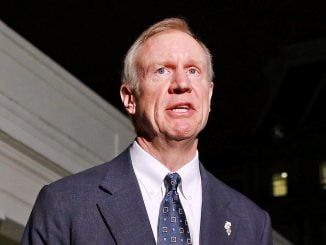WASHINGTON U.S. homebuilding jumped in February as unseasonably warm weather boosted the construction of single-family houses to near a 9-1/2-year high, suggesting the economy remained on solid ground despite an apparent slowdown in the first quarter.The economy’s fundamentals were further strengthened by other data on Thursday showing a drop in the number of Americans filing for unemployment benefits last week amid a tightening labor market. Though factory activity in the mid-Atlantic region cooled this month, manufacturers reported growth in new orders and difficulties finding qualified workers.The data came a day after the Federal Reserve raised interest rates for the third time since the 2008 financial crisis. Fed Chair Janet Yellen told reporters that the U.S. central bank was sending a message that “we have confidence in the robustness of the economy and its resilience to shocks.””The reports painted a mostly upbeat picture of the economy,” said Daniel Silver, an economist at JPMorgan in New York.Housing starts increased 3.0 percent to a seasonally adjusted annualized rate of 1.29 million units last month, the Commerce Department said. Homebuilding was up 6.2 percent compared to February 2016, suggesting housing would contribute to growth this year.Single-family homebuilding, which accounts for the largest share of the residential housing market, surged 6.5 percent to a 872,000-unit pace, the highest level since October 2007.Single-family starts in the Midwest soared 20 percent to their highest level since October 2007. Groundbreaking activity jumped more than 16 percent in the West and Northeast, but fell 2.6 percent in the South.”Single-family homebuilding usually goes dormant throughout much of these regions during the winter months, but has held up better this year due to, up until recently, much milder winter weather,” said Mark Vitner, a senior economist at Wells Fargo Securities in Charlotte, North Carolina.Starts for the volatile multi-family housing segment fell 3.7 percent to a 416,000-unit pace. A robust labor market is supporting the housing market, helping it to buck weakness in other parts of the economy.Further gains in single-family construction are likely as building permits increased 3.1 percent last month. A survey on Wednesday showed homebuilders’ confidence jumped in March to its highest level since June 2005.The surge in confidence is, however, unlikely to translate into a homebuilding boom as builders continued to complain about rising material prices, higher mortgage rates, and shortages of lots and labor.U.S. financial markets were little moved by the data as investors digested the Fed’s decision on Wednesday to raise its overnight benchmark interest rate by 25 basis points to a range of 0.75 percent to 1.00 percent. The U.S. central bank also forecast two more rate hikes this year.The dollar dropped to a one-month low against a basket of currencies. Prices for U.S. Treasuries fell as did stocks on Wall Street.In a separate report on Thursday, the Labor Department said initial claims for state unemployment benefits dropped 2,000 to a seasonally adjusted 241,000 for the week ended March 11.It was the 106th straight week that claims remained below 300,000, a threshold associated with a healthy labor market. That is the longest stretch since 1970, when the labor market was much smaller.The labor market is near full employment, with job growth averaging 209,000 per month over the past three months, and the unemployment rate is at 4.7 percent, close to the nine-year low of 4.6 percent hit last November.A third report from the Philadelphia Fed showed its manufacturing activity index fell to a reading of 32.8 this month from 43.3 in February. However, the survey’s new orders gauge hit its highest level since December 1987.A measure of prices paid by factories for inputs raced to its highest level since May 2011. Factories also reported increasing prices for their goods, supporting the view that inflation pressures were building.More than 60 percent of the firms in the mid-Atlantic said they were experiencing labor shortages and 68 percent reported skills mismatch between job openings and available labor. These percentages were higher compared to the last time companies were asked the same questions in May 2014.Labor market strength and improvement in manufacturing are in stark contrast with a recent softening in consumer, construction and business spending.The Atlanta Fed is forecasting gross domestic product increasing at a 0.9 percent rate in the first quarter. The economy grew at a 1.9 percent rate in the fourth quarter.
Related Articles

Business
Illinois bill expands abortion coverage, faces governors veto
CHICAGO An Illinois bill that would expand state-funded coverage of abortions passed the Democratic-controlled Senate on Wednesday but faces a likely veto by the state’s Republican governor. The measure, which passed the Senate 33-22, […]

Business
Despite massive spending, Dems fail to take U.S. House seat in Georgia
DUNWOODY, Ga. — Democrat candidate Jon Ossoff fell short in his bid to win a seat in the U.S. House of Representatives from Georgia on Tuesday. While Ossoff ended up as the top vote-getter in […]

Business
Apple debuts HomePod speaker to bring Siri into the living room
SAN JOSE, Calif. — Apple on Monday introduced the HomePod, a voice-controlled speaker that can make music suggestions and adjust home temperatures, taking aim at Amazon’s Alexa feature and Echo devices. The move is the […]
